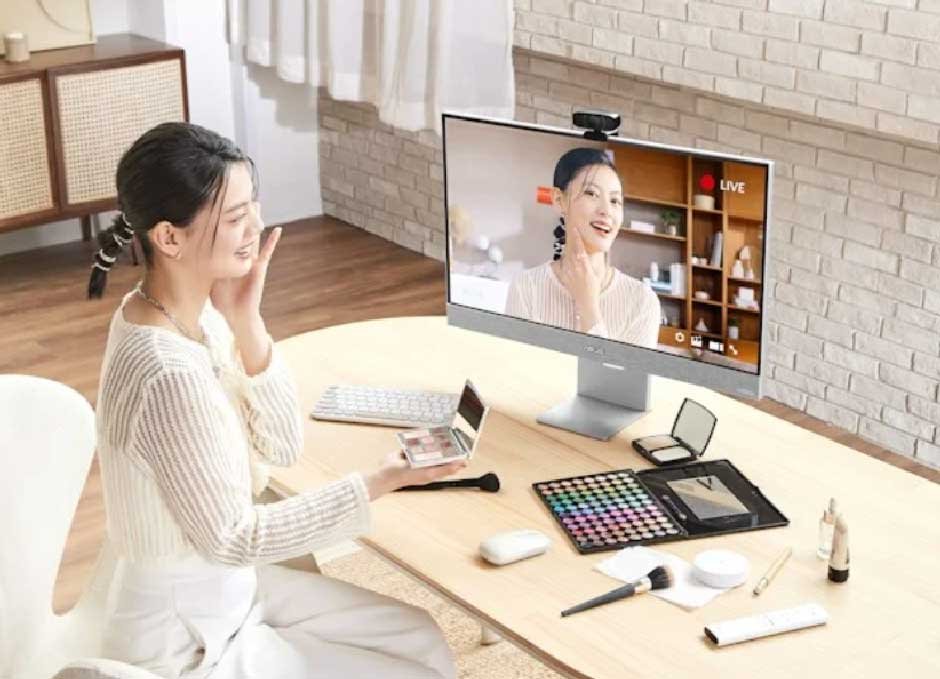Skip to the good bit
ToggleIn today’s fast-paced business environments, choosing the right monitor is crucial for optimizing productivity and creating an efficient workflow. Whether you’re setting up a small business, enhancing a remote work setup, or managing IT in a larger corporation, the monitor you choose can significantly impact your team’s performance.
This article compares smart and traditional monitors, highlighting their key features and practical benefits to help businesses make informed decisions about which type best suits their needs.
What Is a Smart Monitor?
Smart monitors have evolved from basic displays into fully integrated, multifunctional devices. These monitors come with built-in operating systems (OS) or app ecosystems that allow users to run applications without needing an external PC or laptop.
Key Smart Monitor Features:
- Built-in OS or App Ecosystem: Many smart monitors come with a full operating system (like Tizen or Android), allowing you to run apps directly from the monitor itself. This eliminates the need for an external computer for certain tasks.
- Wireless Connectivity: Say goodbye to messy cables. Smart monitors support wireless casting via technologies like Miracast or Chromecast, allowing seamless connections between your monitor, laptops, and smartphones.
- Multi-Device Connectivity: Easily switch between devices with smart monitors that support multiple connections, such as tablets, laptops, and smartphones, all on the same screen.
- Built-in Webcam and Speakers: These monitors include integrated webcams and speakers, making them ideal for video calls without needing extra peripherals.
- Integration with Virtual Assistants: Many smart monitors now feature integration with popular virtual assistants like Alexa or Google Assistant, allowing for hands-free control.
Smart monitors help businesses simplify their tech setup, reduce clutter, and improve team collaboration — all while providing powerful features tailored to modern work needs.
Understanding Traditional Monitors
Traditional monitors are the standard choice for many businesses, offering simple, reliable solutions without the complexity of built-in software or apps.
Traditional Monitor Benefits:
- Cost-Effective: Generally more affordable than smart monitors, traditional monitors are a budget-friendly option for businesses looking to keep costs low.
- Simple Setup: Traditional monitors typically connect via HDMI, VGA, or DisplayPort to a laptop or desktop, making them easy to set up and use.
- Broad Compatibility: These monitors work with almost any system, including older devices, and don’t require additional software updates or integrations.
- Higher Customization: Traditional monitors offer flexibility in terms of customization. You can pair them with external devices like webcams, speakers, or docking stations for added functionality.
For businesses focused on simplicity, reliability, and low-cost setups, traditional monitors remain a strong choice.
Business Use Case Scenarios: Smart vs. Traditional
Both smart and traditional monitors come with unique benefits, but which one is best for your business depends on several factors:
Company Size:
- Startups: Small businesses with limited IT support and budgets may favor traditional monitors for their simplicity and affordability.
- Enterprise: Larger companies, especially those with remote teams, may benefit from the advanced features of smart monitors, such as seamless multi-device connectivity and built-in video conferencing tools.
Budget Range:
- Low Budget: Traditional monitors are typically more budget-friendly, which makes them ideal for businesses with limited capital.
- Higher Budget: Smart monitors justify their higher price tags with added features like wireless connectivity, integrated apps, and better productivity solutions.
IT Support Availability:
- Minimal IT Support: If your business doesn’t have dedicated IT resources, smart monitors offer convenience by reducing the need for additional external devices and complex setups.
- Full IT Support: Businesses with strong IT teams may prefer traditional monitors for their flexibility and ability to integrate with custom setups.
Work Mode:
- In-Office: Traditional monitors are perfect for businesses with physical offices, where easy-to-use and cost-effective solutions are needed.
- Remote Work: Smart monitors excel in remote or hybrid work environments, as they integrate well with video conferencing tools and offer wireless connectivity for a cleaner, more efficient workspace.
For businesses looking to integrate digital signage systems, Monitors AnyWhere – Digital Signage and Video Wall Software Solutions provides a seamless solution. This platform enables businesses with one or multiple locations to communicate and display diverse types of content on multiple screens, all controlled and managed from a single dashboard. It’s a powerful, affordable, and easy-to-use tool for managing and monitoring networks in dynamic business environments.
Key Features for Business Productivity
When it comes to boosting productivity, certain features of smart monitors stand out.
Advantages of Smart Monitors for Productivity:
- Easy Video Conferencing: With built-in webcams and speakers, smart monitors streamline video meetings, eliminating the need for external devices.
- Multitasking Without Extra Devices: Smart monitors allow you to use multiple devices simultaneously, making it easy to work across laptops, tablets, and smartphones.
- Integrated Solutions vs. External Webcams: Smart monitors offer a more streamlined experience for video calls, while traditional monitors may require additional peripherals like webcams and microphones.
Smart monitors make it easy to manage multiple tasks without the clutter of extra cables and devices. This integration simplifies business processes, especially for teams working remotely or in hybrid environments.
Connectivity and Compatibility
Both types of monitors offer different levels of connectivity.
USB-C, HDMI, Bluetooth, and Wireless Support:
- Smart Monitors: Smart monitors typically support modern connections like USB-C, HDMI, and Bluetooth, allowing seamless device integration. Many also offer wireless connectivity for a cleaner desk setup.
- Traditional Monitors: Traditional monitors focus primarily on HDMI and DisplayPort connections. They may require additional adapters or peripherals for wireless or multi-device functionality.
For businesses that require flexibility and convenience, smart monitors are the way to go. They provide a seamless experience across various devices and operating systems.
Energy Efficiency and Sustainability
Energy efficiency is an important consideration for businesses seeking long-term savings and environmental responsibility.
Smart monitors often feature optimized standby modes, reducing power consumption when not in use. Additionally, they use newer display technologies that offer better energy efficiency compared to traditional monitors, which can use more power, especially older models.
For eco-conscious businesses, investing in energy-efficient monitors can help reduce costs and environmental impact.
Smart Monitors for Small Office Spaces
Smart monitors are ideal for businesses with limited office space. Their multi-functional design reduces the need for additional devices, leading to cleaner and more organized workspaces.
With smart monitors, you don’t need separate webcams, speakers, or docking stations, which can save valuable desk space and help keep your office tidy.
Final Verdict: Which Is Best for Your Business?
In summary, the choice between smart and traditional monitors depends on your business’s specific needs:
- Smart Monitors are best for businesses that prioritize remote work, productivity features, and clean, minimalist setups.
- Traditional Monitors are ideal for businesses looking for cost-effective, simple solutions with the flexibility to customize setups with external devices.
Recommendations:
- Small Businesses with limited budgets or simpler needs may find traditional monitors sufficient.
- Medium to Large Enterprises or businesses with hybrid workforces can benefit from the advanced features of smart monitors.
Both types of monitors can enhance your business workflow, but smart monitors offer more features for modern, connected workplaces.







